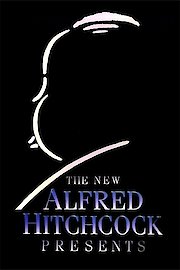
Ep 25. The Little Man Who Was There
- April 3, 1960
- 25 min
-
7.3 (501)
In the season 5 episode 25 of Alfred Hitchcock Presents, titled The Little Man Who Was There, viewers are drawn into a suspenseful narrative that expertly weaves together themes of guilt, paranoia, and moral consequence. Set against the backdrop of a seemingly mundane suburban life, the episode builds an atmosphere tinged with unease, expertly crafted by the legendary Alfred Hitchcock's signature storytelling approach.
The plot centers around a mild-mannered protagonist who leads a seemingly ordinary life. His character is visually unremarkable but richly conceived, embodying the quintessential everyman who becomes entangled in a web of his own making. Initially, he presents as the approachable neighbor or coworker—someone easy to overlook in the hustle and bustle of daily life. Yet, as the story unravels, it becomes apparent that he harbors deeper insecurities and hidden desires that lead him to question his own choices and discern his place in the world.
As the action unfolds, it is clear that our protagonist’s tranquility begins to fracture. Circumstances spiral beyond his control, leading to a series of increasingly dramatic encounters. The narrative adeptly plays with the idea of perception versus reality; what one character sees may not be the whole truth, leaving both the protagonist and the audience in a state of uncertainty. The titular "little man" serves as a metaphor for the small, internal battles that many face—those nagging thoughts that linger just beneath the surface, ready to emerge in moments of vulnerability or stress.
The pacing of the episode is masterfully handled, keeping viewers on the edge of their seats. Tension builds gradually, as Hitchcock artfully layers hints of impending doom while simultaneously embedding dark humor into the dialogue. Each character interaction is loaded with subtext, revealing the intricacies of human relationships and the often hidden motivations behind one’s actions. Through this lens, familiar dynamics of friendship, rivalry, and moral ambiguity are explored, revealing the complex nature of human motivations.
Visually, The Little Man Who Was There is a feast for the eyes. Hitchcock's keen eye for composition is evident in every frame. The episode features stark contrasts between light and shadow, symbolizing the inner turmoil of the protagonist. Strategic camera angles enhance the feeling of claustrophobia and anxiety, pulling the audience deeper into the protagonist's increasing sense of isolation. The setting plays a significant role as well, with deceptively cozy suburban locales that belies the tension brewing beneath the surface.
Notable is the use of recurring motifs, reflective of Hitchcock's trademark style. The episode ingeniously incorporates elements such as mirrors and reflections, which serve as powerful symbols throughout the narrative. They represent the duality of man—the outward persona versus the inner self, and the conflict that arises when one’s actions conflict with their moral compass.
The supporting cast is equally compelling, with performances that add depth and dimension to the already intricate plot. Each character serves as a mirror to the protagonist's struggles, offering contrasting perspectives on guilt, responsibility, and redemption. Their interactions are laden with tension, making every scene rich with potential consequences.
Music also plays a pivotal role in setting the overall tone of the episode. The score is haunting yet understated, enhancing the viewer's emotional response while remaining in sync with the unfolding drama. The subtle musical cues serve to amplify the suspense, rendering even the quietest moments charged with anticipation.
As the episode progresses, viewers are invited to ponder larger questions about the nature of guilt and the weight of one’s conscience. The internal conflicts faced by the protagonists resonate universally, tapping into shared human experiences. Hitchcock’s brilliance lies in his ability to make each viewer reflect on their own dilemmas and moral inquiries, drawing a line between right and wrong that is often blurred.
In conclusion, The Little Man Who Was There encapsulates the essence of Alfred Hitchcock Presents through its compelling narrative and richly developed characters. It is a vivid exploration of the human psyche, leaving audiences both intrigued and contemplative long after the credits roll. With its masterful storytelling, mesmerizing visuals, and the iconic dark humor that Hitchcock is known for, this episode stands out as a memorable chapter in the anthology series, engaging viewers with its chilling embrace of what lies beneath the surface of our everyday lives.
